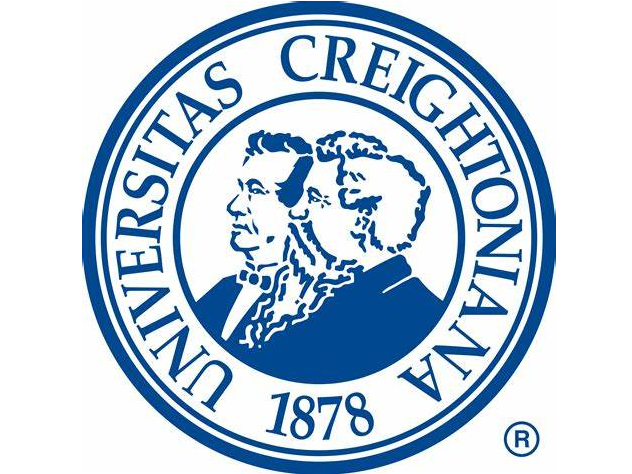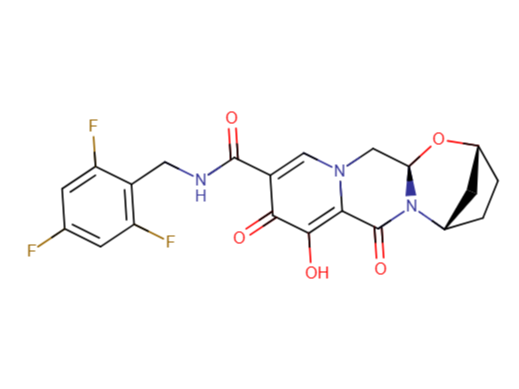Drug information
Bictegravir
Not provided
Small molecule
Bictegravir (BIC) is an integrase strand transfer inhibitor that is combined with emtricitabine and tenofovir alafenamide into a once-per-day, short-acting oral tablet (Biktarvy) that can be taken as a complete regimen for HIV-1 treatment. CAB-LA is a similar integrase inhibitor that has already shown commercial success as an effective, single-agent, long-acting (LA) injectable medicine for HIV pre-exposure prophylaxis. Investigational preclinical formulations of LA injectable BIC include: (i) subcutaneous solid drug nanoparticles (SDN) from CELT at the University of Liverpool, (ii) intramuscular prodrug SDN from University of Nebraska, (iii) Poly (lactic-co-glycolic acid) loaded BIC nanoparticles from Creighton University and (iv) dissolving microneedles from Queen’s University Belfast.
Unknown
Unknown
Therapeutic area(s)
- HIV
- Pre-Exposure Prophylaxis (PrEP)
- Treatment
Administration route
Subcutaneous, Intramuscular, Transdermal
Associated long-acting platforms
Polymer-based particles, Aqueous drug particle suspension, Polymeric implant
Use of drug
- Administered by a community health worker
- Administered by a nurse
- Administered by a specialty health worker
- To be determined
Not provided
Dosage
Not provided
Not provided
Not provided
Not provided
Not provided
Not provided
Formulations
CompareAssociated technologies
Not provided
Comment & Information
Developer(s)

The Centre of Excellence for Long-acting Therapeutics (CELT) is a cross-faculty research initiative combining world leading expertise in pharmacology and materials chemistry and working with international partners to disseminate research findings in long-acting medicine and change the global landscape of drug administration.

The University of Nebraska Medical Center (UNMC) is a renowned public academic health science center located in Omaha, Nebraska. Established in 1881, UNMC is a leading institution in fields such as cancer research, infectious diseases, and rural health. The university is dedicated to advancing health care through innovative research, education, and patient care.

Creighton University, founded in 1878, is a private university in Omaha, Nebraska. It is classified within "R2: Doctoral Universities – High research activity". With nine schools and colleges, Creighton offers a wide range of academic programs, including a renowned health sciences division. The university is dedicated to Jesuit values, emphasizing intellectual achievement and service to others.

Queen's University Belfast, established in 1845, is a leading public research university in Northern Ireland and a member of the Russell Group. It offers a wide range of undergraduate and postgraduate programs across three faculties: Arts, Humanities & Social Sciences; Engineering & Physical Sciences; and Medicine, Health & Life Sciences.
Drug structure
Scale-up and manufacturing prospects
LA injectable BIC is currently in preclinical development and therefore potential scale-up and manufacturing prospects for the candidate formulations have not yet been fully evaluated.
Not provided
Manufacturing considerations will differ depending on the specific preclinical formulation. The SDN formulation developed by researchers from CELT at the University of Liverpool was manufactured using emulsion-templated freeze-drying (ETFD) prior to formation of a solid format using vacuum compression moulding (VCM). The intramuscular prodrug SDN from University of Nebraska Medical Centre used dimeric (MXBIC) and monomeric (M2BIC) BIC prodrugs synthesized by esterification reactions and converted into aqueous surfactant stabilized solid drug nanosuspensions by high-pressure homogenization.
For the CELT SDN Formulation: BIC concentrations were quantified in plasma using validated LC-MS/MS and the injection site was terminally harvested for histopathological analysis. Results: ETFD yielded solids consisting of 70% BIC by weight, with subsequent dispersion in water yielding BIC particles with hydrodynamic diameters (Dz) between 700-850 nm, as determined by dynamic light scattering.
Excipients
Not provided
Not provided
Not provided
Delivery device(s)
Not provided
There are either no relevant patents or these were not yet submitted to LAPaL
Publications
Mandal S, Prathipati PK, Belshan M, Destache CJ. A potential long-acting bictegravir loaded nano-drug delivery system for HIV-1 infection: A proof-of-concept study. Antiviral Res. 2019 Jul;167:83-88. DOI: 10.1016/j.antiviral.2019.04.007. Epub 2019 Apr 13. PMID: 30991088; PMCID: PMC7263829.
Bictegravir (BIC), a newly FDA-approved integrase strand transfer inhibitor (INSTI), as a single tablet regimen has proven efficacious in treating HIV-1 and SIV viruses, with reduced resistance. BIC clinical trials have not investigated its prophylaxis potency. This study investigates the HIV prevention potency of a novel long-acting BIC nano-formulation aimed to improve adherence. Poly (lactic-co-glycolic acid) loaded BIC nanoparticles (BIC NPs) were formulated using an oil-in-water emulsion methodology. BIC NPs were < 200 nm in size, with 47.9 ± 6.9% encapsulation efficiency. A novel, sensitive and high throughput LC-MS/MS method was used to estimate intracellular pharmacokinetics (PK) of BIC NPs and compared to BIC solution demonstrated prolonged intracellular BIC retention. BIC NPs safety was assessed based on cytotoxicity. Further, in-vitro prevention study of BIC NPs vs BIC solution was assessed against HIV-1NLX and HIV-1ADA on TZM-bl cell line and PBMCs, respectively. BIC nanoencapsulation demonstrated elevated cellular cytotoxicity concentration (CC50: 2.25 μM (BIC solution) to 820.4 μM (BIC NPs)] and lowers HIV-1 inhibitory concentration [EC50: 0.604 μM (BIC solution) to 0.0038 μM (BIC NPs)) thereby improving selectivity index (SI) from 3.7 (BIC solution) to 215,789 (BIC NP) for TZM-bl cells. Comparable results in PBMCs were obtained where BIC NPs improved SI from 0.29 (BIC solution) to 523.33 (BIC NPs). This demonstrates long-acting BIC nano-formulation with sustained drug-release potency, improved BIC cytotoxicity and enhanced HIV-1 protection compared to BIC in solution.
Chunyang Zhang, Lalitkumar K. Vora, Ismaiel A. Tekko, Fabiana Volpe-Zanutto, Ke Peng, Alejandro J. Paredes, Helen O. McCarthy, Ryan F. Donnelly,
Development of dissolving microneedles for intradermal delivery of the long-acting antiretroviral drug bictegravir, International Journal of Pharmaceutics, Volume 642, 2023, 123108, ISSN 0378-5173, https://doi.org/10.1016/j.ijpharm.2023.123108.
Abstract: Oral administration and intramuscular (IM) injection are commonly recommended options for human immunodeficiency virus (HIV) treatment. However, poor patient compliance due to daily oral dosing, pain at injection sites and the demand for trained healthcare staff for injections limit the success of these administration routes, especially in low-resource settings. To overcome these limitations, for the first time, we propose novel bilayer dissolving microneedles (MNs) for the intradermal delivery of long-acting nanosuspensions of the antiretroviral (ARV) drug bictegravir (BIC) for potential HIV treatment and prevention. The BIC nanosuspensions were prepared using a wet media milling technique on a laboratory scale with a particle size of 358.99 ± 18.53 nm. The drug loading of nanosuspension-loaded MNs and BIC powder-loaded MNs were 1.87 mg/0.5 cm2 and 2.16 mg/0.5 cm2, respectively. Both dissolving MNs exhibited favorable mechanical and insertion ability in the human skin simulant Parafilm® M and excised neonatal porcine skin. Importantly, the pharmacokinetic profiles of Sprague Dawley rats demonstrated that dissolving MNs were able to intradermally deliver 31% of drug loading from nanosuspension-loaded MNs in the form of drug depots. After a single application, both coarse BIC and BIC nanosuspensions achieved sustained release, maintaining plasma concentrations above human therapeutic levels (162 ng/mL) in rats for 4 weeks. These minimally invasive and potentially self-administered MNs could improve patient compliance, providing a promising platform for the delivery of nanoformulated ARVs and resulting in prolonged drug release, particularly for patients in low-resource settings.
Additional documents
No documents were uploaded
Collaborate for development
Consider on a case by case basis, collaborating on developing long acting products with potential significant public health impact, especially for low- and middle-income countries (LMICs), utilising the referred to long-acting technology
Share technical information for match-making assessment
Provide necessary technical information to a potential partner, under confidentiality agreement, to enable preliminary assessment of whether specific medicines of public health importance in LMICs might be compatible with the referred to long-acting technology to achieve a public health benefit
Work with MPP to expand access in LMICs
In the event that a product using the referred to long-acting technology is successfully developed, the technology IP holder(s) will work with the Medicines Patent Pool towards putting in place the most appropriate strategy for timely and affordable access in low and middle-income countries, including through licensing
